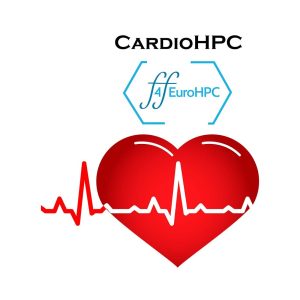| Title | Improving DL-based Arrhythmia Classification Algorithm and Simulation of Real-Time Heart Monitoring of Thousands of Patients |
|---|---|
| Period | March 2022 – Mai 2023 |
| Description | As certified manufacturers of a medical device, our business proposal is to establish a heart monitoring center in the EU based on wearable ECG sensors and AI-based detection and classification software for automated reporting and alerting, not found on the market to-day outside of hospitals. This shortens hospitalization time, enabling patient monitoring while they perform everyday activities, and prevents serious heart damages, providing better healthcare and increasing life expectancy. In addition, a heart monitoring center would boost our sales by reaching a bigger number of customers including large healthcare provid-ers. On a collective scale, our data driven innovation increases healthcare efficiency, thus promoting fast economic growth through a new kind of service in the health economy, which is especially useful for remote healthcare in times of a pandemic.
In July 2020, we have certified ViewECG as a monitoring software medical device (CE Mark). During the development, we implemented various signal processing and AI-based algorithms to satisfy performance requirements set by medical standards. We faced a prob-lem with DL-based detection of arrhythmia since our goal to train the algorithm with an ex-tensive set of benchmark ECG data required huge computing resources and we had to limit feature engineering in our training model, after only 4% of processing in 14 days on a mod-ern GPU (nVidia GeForce RTX 2080), understanding that it will take one year of processing to generate the initial model. Because we were unable to solve the problem by other means, our dream to improve the existing DL algorithm and include noise detection generated by muscle movements (since wearable ECG sensors are to be used in an everyday environ-ment) can only be realized by accessing HPC resources. In order to establish a monitoring center, we need to do a large-scale demonstration to opti-mize resources for real-time processing for tens of thousands of patients matching large streaming data requirements and compute-intensive tasks. We plan to conduct a simulation experiment implementing specific architecture functions to exploit real-time performance. CardioHPC will help us not just reach the goal, but also will demonstrate how HPC is used to run business and deliver real business impact, reducing costs for design and time to market. |
| Project leader | Univ.-Prof. DI Dr. Radu Prodan |
| radu.prodan@aau.at | |
| Employees | Andrei Amza; Armin Hohenegger; Mika Stephan Peter Werner Hautz |
| Cooperations | Universität Stuttgart, Ss. Cyril and Methodius University in Skopje, Universität Innsbruck, Innovation dooel |
| Sponsered or supported by | FF4EuroHPC |


